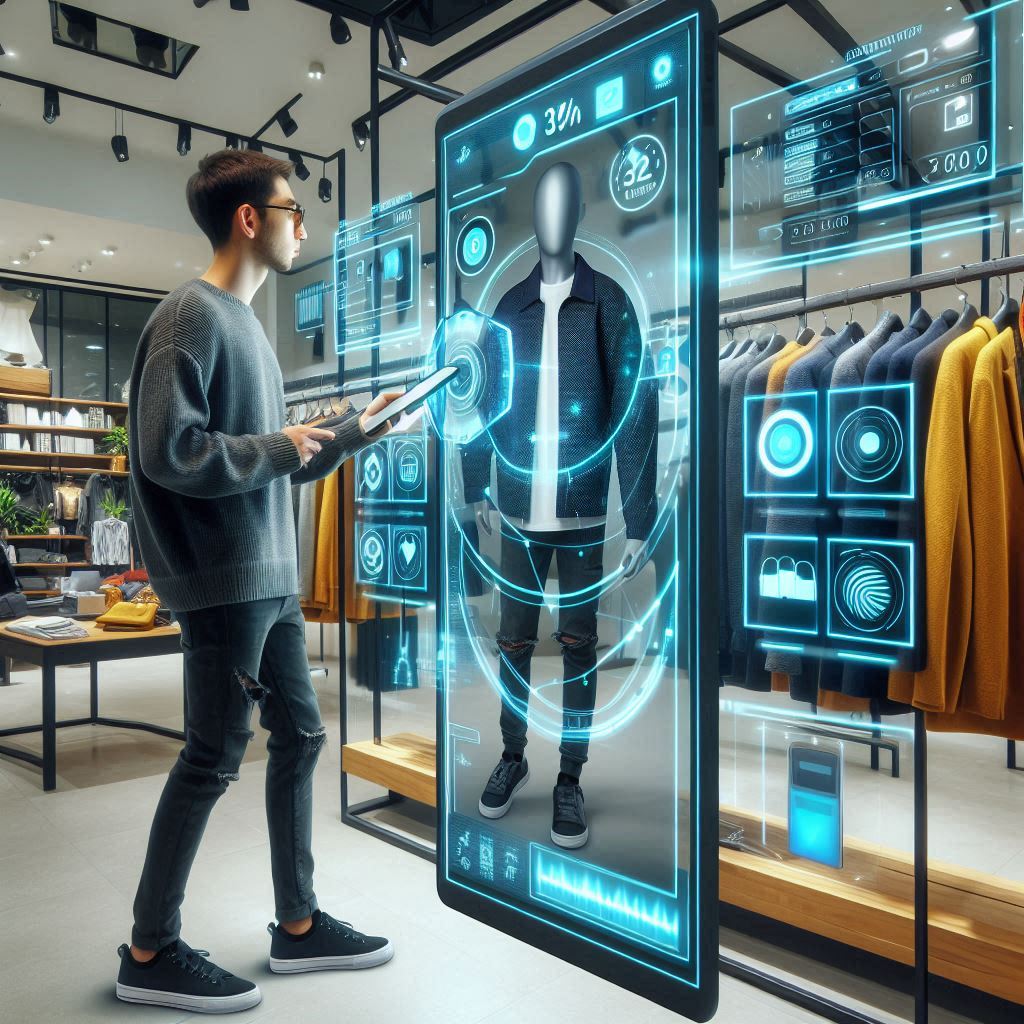Augmented Reality (AR) is transforming the retail landscape, offering innovative ways for consumers to interact with products before making a purchase. As technology continues to evolve, various sectors within the retail industry are adopting AR solutions to enhance the shopping experience. This article explores the key applications of augmented reality in shopping, focusing on fashion, interior design, cosmetics, virtual try-ons, and in-store experiences.
The augmented reality (AR) shopping market size is expected to reach USD 11.6 billion by 2028 from USD 3.4 billion in 2023, at a CAGR of 28.0% from 2023 to 2028. Increasing adoption of online shopping and e-commerce platforms, growing demand for personalized shopping experience, and increasing smartphone penetration are some of the major factors contributing to the growth of AR shopping market.
Applications of Augmented Reality Shopping Include:
Augmented Reality in Fashion Shopping
AR has made a significant impact in the fashion industry, allowing consumers to visualize clothing and accessories in a more interactive manner. Retailers like Zara and H&M have started using AR to enhance the shopping experience. Shoppers can see how clothes look on a digital avatar that mimics their body shape, eliminating the need for physical try-ons. This not only saves time but also reduces the inconvenience of returns due to size or fit issues.
Analysis: The use of AR in fashion shopping caters to a generation increasingly accustomed to digital interactions. It enables retailers to showcase their collections more dynamically, encouraging impulse purchases. As AR technology continues to improve, we can expect more brands to adopt these solutions, potentially leading to higher sales and reduced return rates.
AR Applications in Interior Design and Furniture Shopping
The interior design sector is leveraging AR to help customers visualize how furniture and decor items will look in their homes. Companies like IKEA have introduced apps that allow users to place virtual furniture in their own living spaces using their smartphones. Customers can adjust the size, color, and orientation of items to see how they fit within their existing decor.
This application significantly enhances consumer confidence in purchasing large, often expensive items like furniture. By allowing customers to see products in their own environment, retailers can minimize buyer’s remorse and increase satisfaction levels, leading to repeat business.
Download PDF Brochure @
https://www.marketsandmarkets.com/pdfdownloadNew.asp?id=26449280

Cosmetic and Beauty Shopping with AR
The beauty industry has been one of the early adopters of AR, with brands like L’Oréal and Sephora offering virtual makeup try-ons. Consumers can use their smartphones or in-store kiosks to see how different shades of lipstick, foundation, and eye makeup look on their own faces. This technology provides a personalized experience, helping customers make more informed decisions.
Analysis: Virtual try-ons in cosmetics not only enhance the customer experience but also reduce waste associated with returned products. As AR technology becomes more sophisticated, we can expect to see more realistic simulations that further bridge the gap between physical and online shopping.
Virtual Try-Ons in AR Shopping
Virtual try-ons extend beyond fashion and beauty, encompassing eyewear and accessories as well. Companies like Warby Parker have developed AR solutions that allow users to “try on” glasses by overlaying them on their faces through a mobile app. This feature helps customers find the perfect style and fit without visiting a store.
Virtual try-ons are particularly valuable in categories where fit and style are critical. They enhance the online shopping experience, providing a level of assurance that is often missing when purchasing items digitally. As more brands implement these technologies, we can anticipate a shift in consumer behavior towards online shopping for items traditionally bought in-store.
Enhancing In-Store Experiences with Augmented Reality
future of AR shopping is not limited to online shopping; it is also enhancing the in-store experience. Retailers are integrating AR into their physical stores to provide interactive product information, promotions, and immersive experiences. For example, shoppers can scan items with their smartphones to receive detailed information, watch demonstrations, or unlock special discounts.
This application of AR helps to bridge the gap between digital and physical shopping experiences. By creating an interactive environment, retailers can engage customers more deeply, making their shopping experience memorable. As competition increases, providing an enhanced in-store experience through AR may become essential for driving foot traffic and sales.
The applications of augmented reality in shopping are diverse and impactful, reshaping how consumers engage with products across various sectors. From fashion and interior design to cosmetics and in-store experiences, AR is paving the way for a more interactive, personalized shopping journey. As technology continues to evolve, we can expect to see even more innovative applications, ultimately enhancing customer satisfaction and loyalty in the retail landscape
